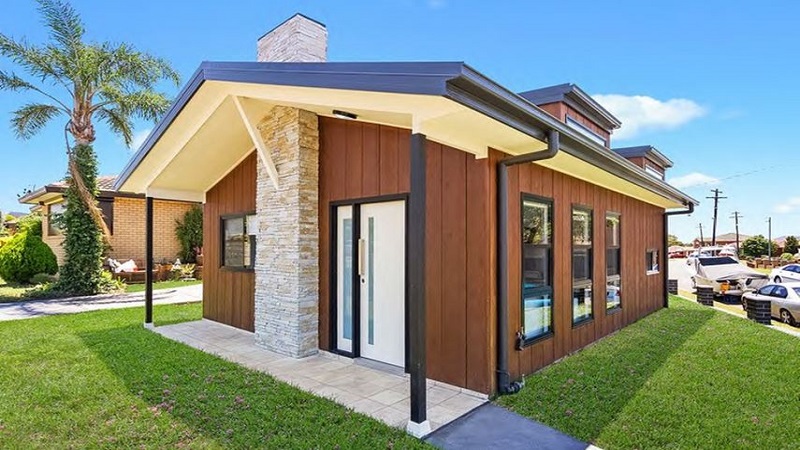- Granny flats provide a separate living space, ideal for privacy or rental income, while home extensions expand the existing home structure, enhancing living space.
- Granny flats often have lower initial costs but may require separate maintenance, whereas home extensions can significantly increase home value.
- Legal and regulatory requirements vary for both options, including zoning laws and building permits, which must be navigated carefully.
- Both options can increase resale value, with the choice depending on personal needs, budget, and long-term goals.

1. Understanding Granny Flats and Home Extensions
When considering adding more space to your home, it’s essential to understand the fundamental differences between a granny flat and a home extension. A home extension involves expanding the existing structure of your home to create additional rooms or spaces. This could mean adding a new bedroom, enlarging the kitchen, or building a new floor. Home extensions are seamlessly integrated with the main house, maintaining a cohesive aesthetic and functional flow. This option is ideal for families needing more room but wanting to keep everything under one roof.
On the other hand, what exactly is a granny flat? It’s a self-contained living unit typically located on the same property as a larger home. These units can serve various purposes, such as housing elderly family members, providing a separate space for adult children, or even generating rental income. They often come equipped with a small kitchen, bathroom, and living area, making them perfect for independent living.
Both granny flats and home extensions have distinct construction and design considerations. Granny flats may require separate utilities and entrances, while extensions must blend with the existing architecture and comply with structural regulations. Understanding these differences is the first step in making an informed decision that suits your lifestyle and property.
2. Cost Comparison and Financial Considerations
When planning to expand your living space, understanding the financial implications is crucial. Both granny flats and home extensions come with their own set of costs and potential financial benefits.
Initial Costs and Investment: The cost of constructing a granny flat can vary significantly depending on size, design, and location. On average, a basic granny flat might be more affordable than a full-scale home extension due to its smaller size and simpler construction. However, the price can increase if you opt for high-end finishes or additional features like a separate entrance or a garage.
In contrast, home extensions typically involve more substantial construction work, which can be more expensive. This is especially true if the extension includes major renovations or requires structural changes to the existing home. While the initial investment might be higher, extensions can often increase the home’s overall value by a significant margin.
Ongoing Maintenance and Returns: When considering long-term financial aspects, think about maintenance costs. Granny flats, being separate units, may require independent maintenance for utilities, appliances, and general upkeep. However, investing in a granny flat for rental income can offset these expenses, providing a steady stream of revenue and potentially paying for itself over time.
Home extensions, while integrated with the main house, can also increase maintenance costs, especially if they add complex features like additional bathrooms or kitchens. However, extensions can enhance the home’s functionality, potentially leading to a higher resale value in the future. The financial return from an extension depends on the real estate market and the quality of the work done.
Both options offer financial benefits, but the right choice depends on your budget, long-term goals, and the potential for returns. Whether you’re looking to generate rental income or increase your home’s value, it’s essential to weigh the costs against the benefits.
3. Lifestyle and Functional Benefits
Choosing between a granny flat and a home extension can also come down to the lifestyle and functional benefits each option offers.
Privacy and Independence: One of the significant advantages of a granny flat is the privacy and independence it provides. This setup is ideal for housing elderly parents or adult children who desire their own space while staying close to family. It can also serve as a guest house, offering visitors a comfortable and private place to stay without disrupting the main household.
Integration and Expansion: Home extensions are perfect for families looking to expand their existing living space. Whether it’s an additional bedroom, a larger kitchen, or a home office, extensions can be customized to meet your specific needs. They allow for seamless integration with the rest of the house, maintaining a cohesive look and feel. This option is particularly attractive for those who want to stay in their current location but need more room to accommodate a growing family or changing lifestyle.
Impact on Daily Life: Both options can significantly impact daily life. A granny flat can offer a quiet retreat for work or hobbies, or serve as a rental unit, bringing in extra income without much effort. On the other hand, a well-designed extension can improve the flow and functionality of your home, making everyday activities more convenient and enjoyable.
Deciding between a granny flat and a home extension ultimately depends on your lifestyle preferences and how you envision using the additional space. Both offer unique benefits that can enhance your quality of life.
4. Legal and Regulatory Factors
Before embarking on a construction project, it’s crucial to understand the legal and regulatory aspects that come with building either a granny flat or a home extension. Both options require adherence to local zoning laws, building codes, and other regulations, but the specifics can vary depending on your location and the nature of the project.
Zoning Laws and Building Codes: Granny flats often have specific zoning laws that govern their construction. These regulations can include limitations on the size, height, and location of the unit on your property. In some areas, there may be restrictions on renting out granny flats, or they may require special permits if intended for non-family use. It’s important to check with your local council or a professional consultant to understand what’s permissible in your area.
Home extensions, while typically more straightforward in terms of zoning, still require compliance with building codes. These codes ensure that the extension meets safety standards and integrates properly with the existing structure. You’ll likely need to submit detailed plans and obtain approval before starting construction. Depending on the extent of the work, you might also need to hire a structural engineer or an architect.
Permits and Approvals: Both granny flats and home extensions will generally require various permits and approvals. For granny flats, this could include permits for plumbing, electrical work, and overall construction. Home extensions often require additional permits, especially if the work involves altering the home’s structure or utilities. The process can be time-consuming, so it’s advisable to start early and work with professionals who can help navigate the bureaucracy.
Potential Legal Challenges or Restrictions: It’s essential to be aware of any potential legal challenges that might arise. For example, some neighborhoods have restrictive covenants that could limit your ability to build a granny flat or an extension. Additionally, disputes with neighbors over property lines or construction noise can lead to legal issues. Understanding these factors beforehand can help you avoid surprises and ensure a smoother process.
Navigating the legal landscape can be complex, but it’s a crucial step in ensuring your project is compliant and successful. Consulting with professionals and doing thorough research will help you avoid pitfalls and move forward with confidence.
5. Resale Value and Market Appeal
When adding to your home, considering the potential impact on resale value and market appeal is vital. Both granny flats and home extensions can enhance your property’s attractiveness, but in different ways.
Impact on Property Value: A well-designed granny flat can significantly boost your property’s value, especially in areas where additional living spaces are in high demand. These units appeal to buyers looking for flexible living arrangements, such as accommodating extended family or generating rental income. However, the value added by a granny flat can vary depending on factors like location, quality of construction, and local market trends.
Home extensions, on the other hand, can add substantial value by increasing the overall square footage of your home. This is particularly true if the extension includes desirable features like extra bedrooms, modern kitchens, or luxurious bathrooms. Larger homes often command higher prices in the real estate market, making extensions a potentially lucrative investment.
Trends in the Real Estate Market: The demand for granny flats and home extensions can fluctuate with market trends. In recent years, there has been a growing interest in multi-generational living and home-based income opportunities, making granny flats an attractive feature for many buyers. Conversely, traditional home extensions remain popular for families looking to expand their living space without relocating.
Long-Term Benefits: Beyond immediate resale value, both options offer long-term benefits. A granny flat can provide ongoing rental income or serve as a convenient living space for aging parents, reducing the need for external care facilities. Home extensions can adapt to changing family needs, offering flexible space that can be repurposed as children grow or work situations evolve.
Ultimately, the decision between a granny flat and a home extension should align with your long-term goals and the potential market appeal of your property. Both options can be valuable investments, but it’s essential to choose the one that best fits your needs and circumstances.
Conclusion
In conclusion, both granny flats and home extensions offer unique benefits and considerations. Granny flats provide a separate living space that can enhance privacy and generate income, while home extensions offer a way to expand and improve the existing home structure. The decision ultimately comes down to your specific needs, budget, and long-term goals. By carefully considering the cost, lifestyle benefits, legal factors, and potential impact on resale value, you can make an informed choice that adds value to your property and enhances your quality of life.
